Space
Sign up for our newsletter
We summarize the week's scientific breakthroughs every Thursday.
-
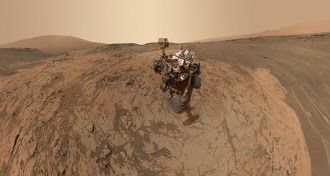 Planetary Science
Planetary ScienceThe Martian Diaries
Curiosity has explored Mars for over two and a half years. What if NASA's rover kept a scrapbook?
-
 Astronomy
AstronomyLit-up gas clouds hint at galaxies’ violent pasts
Voorwerpjes, tendrils of gas that orbit galaxies, continue to glow tens of thousands of years after being blasted with ultraviolet radiation.
-
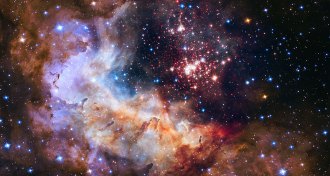 Astronomy
AstronomyAstronomers celebrating Hubble’s past focus on its future
Astronomers celebrate the 25th anniversary of the Hubble Space Telescope by reflecting on its diversity and looking ahead to the future.
-
 Astronomy
AstronomyCosmic threesomes make some galaxies run away
Extremely rare, free-floating galaxies called compact ellipticals may have been ejected from their home clusters after a massive intergalactic meet-up.
-
 Space
SpaceDriving Curiosity to discovery
Discovery is driven by curiosity, on Mars and closer to home.
By Eva Emerson -
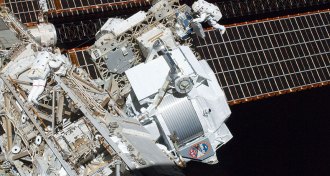 Astronomy
AstronomyCosmic rays misbehave in space station experiment
A puzzling feature in a new cosmic ray census may force physicists to rethink which cosmic objects send these speedy particles hurtling across the galaxy.
By Andrew Grant -
 Astronomy
AstronomyColor differences could recalibrate cosmic acceleration rate
Color differences in a class of supernovas could lower estimates of how much dark energy is in the universe.
-
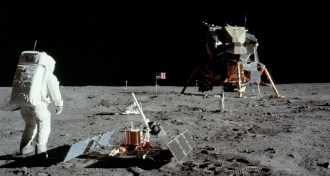 Planetary Science
Planetary ScienceBefore moon landings, scientists thought dust or crust might disrupt touchdown
Moon dust didn’t swallow spacecraft as was suggested in the 1960s. Successful exploration since that has changed our view of the moon.
-
 Astronomy
AstronomyA look back in time reveals Milky Way’s evolution
A sample of galaxies covering 11 billion years of cosmic history helps astronomers document how the Milky Way evolved.
-
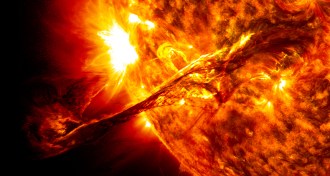 Astronomy
AstronomyX-rays offer early warning for solar flares
X-rays shot out by the sun foretell the intensity of an upcoming solar flare, new research suggests.
-
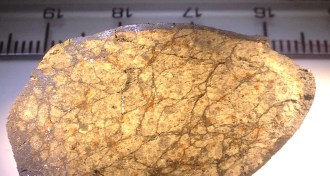 Planetary Science
Planetary ScienceThe moon is about as old as we thought it was
Meteorite heat signatures pinpoint the age of the collision that created the moon — confirming many previous lunar age estimates.
-
 Astronomy
AstronomyRinging rings reveal Saturn’s innards
Scientists propose that exotic structures are buried within Saturn, based on analyses of subtle vibrations in the planet’s rings.
By Andrew Grant